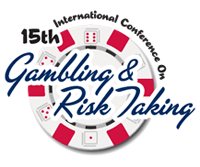Presentation Type
Event
Location
Caesars Palace, Las Vegas Florentine II
Start Date
30-5-2013 8:30 AM
End Date
30-5-2013 10:00 AM
Disciplines
Economics | Gaming and Casino Operations Management | Psychology | Public Affairs, Public Policy and Public Administration | Sociology | Statistics and Probability | Tourism and Travel
Abstract
The Atlantic City casino market has faced increasing competition over the past decade, particularly since the introduction of Pennsylvania gaming in 2006. In response to this increased competition, the State of New Jersey, through legislation, created a public private partnership to both redevelop parts of the city and devote significant marketing dollars into shaping the image of the city. The private side of that partnership, the Atlantic City Alliance (ACA), found in their earliest consumer research that Atlantic City’s image as a gaming destination was well established, but that the city was less known for the retail, entertainment and restaurants it had to offer. In an effort to help broaden Atlantic City’s image and visitor base, the ACA launched the “DO AC” campaign, a campaign that featured very little in terms of gaming but rather focused on the non-gaming aspects of the resort.
This study examines significant differences between recent visitors (2012) to the Atlantic City market and those who visited the year prior to the announcement of the public private partnership (2010). The Levenson Institute of Gaming, Hospitality and Tourism at the Richard Stockton College of New Jersey commissioned two studies that profiled the Atlantic City visitor, a February 2011 study where 125 Atlantic City visitors (2010 visitors) were surveyed and a February 2013 study which produced 683 Atlantic City visitor (2012 visitors) responses. The surveys were conducted in February of both 2011 and 2013, with the data collected by the Hughes Center for Public Policy’s Polling Institute at the college and Zogby International. A logistic regression model highlights some important demographic and behavioral differences between the 2010 and 2012 visitors to the Atlantic City casino market. Particular attention is paid to the spending habits between the two groups. Significant differences are discussed.
Included in
Economics Commons, Gaming and Casino Operations Management Commons, Psychology Commons, Public Affairs, Public Policy and Public Administration Commons, Sociology Commons, Statistics and Probability Commons, Tourism and Travel Commons
Session 3-1-E: Modeling Change in the Profile of the Atlantic City Visitor
Caesars Palace, Las Vegas Florentine II
The Atlantic City casino market has faced increasing competition over the past decade, particularly since the introduction of Pennsylvania gaming in 2006. In response to this increased competition, the State of New Jersey, through legislation, created a public private partnership to both redevelop parts of the city and devote significant marketing dollars into shaping the image of the city. The private side of that partnership, the Atlantic City Alliance (ACA), found in their earliest consumer research that Atlantic City’s image as a gaming destination was well established, but that the city was less known for the retail, entertainment and restaurants it had to offer. In an effort to help broaden Atlantic City’s image and visitor base, the ACA launched the “DO AC” campaign, a campaign that featured very little in terms of gaming but rather focused on the non-gaming aspects of the resort.
This study examines significant differences between recent visitors (2012) to the Atlantic City market and those who visited the year prior to the announcement of the public private partnership (2010). The Levenson Institute of Gaming, Hospitality and Tourism at the Richard Stockton College of New Jersey commissioned two studies that profiled the Atlantic City visitor, a February 2011 study where 125 Atlantic City visitors (2010 visitors) were surveyed and a February 2013 study which produced 683 Atlantic City visitor (2012 visitors) responses. The surveys were conducted in February of both 2011 and 2013, with the data collected by the Hughes Center for Public Policy’s Polling Institute at the college and Zogby International. A logistic regression model highlights some important demographic and behavioral differences between the 2010 and 2012 visitors to the Atlantic City casino market. Particular attention is paid to the spending habits between the two groups. Significant differences are discussed.

Comments
Moderator: Roberto Coppola
Session 3-1-E Consumer Profiles in the Gaming Industry
File: Paper